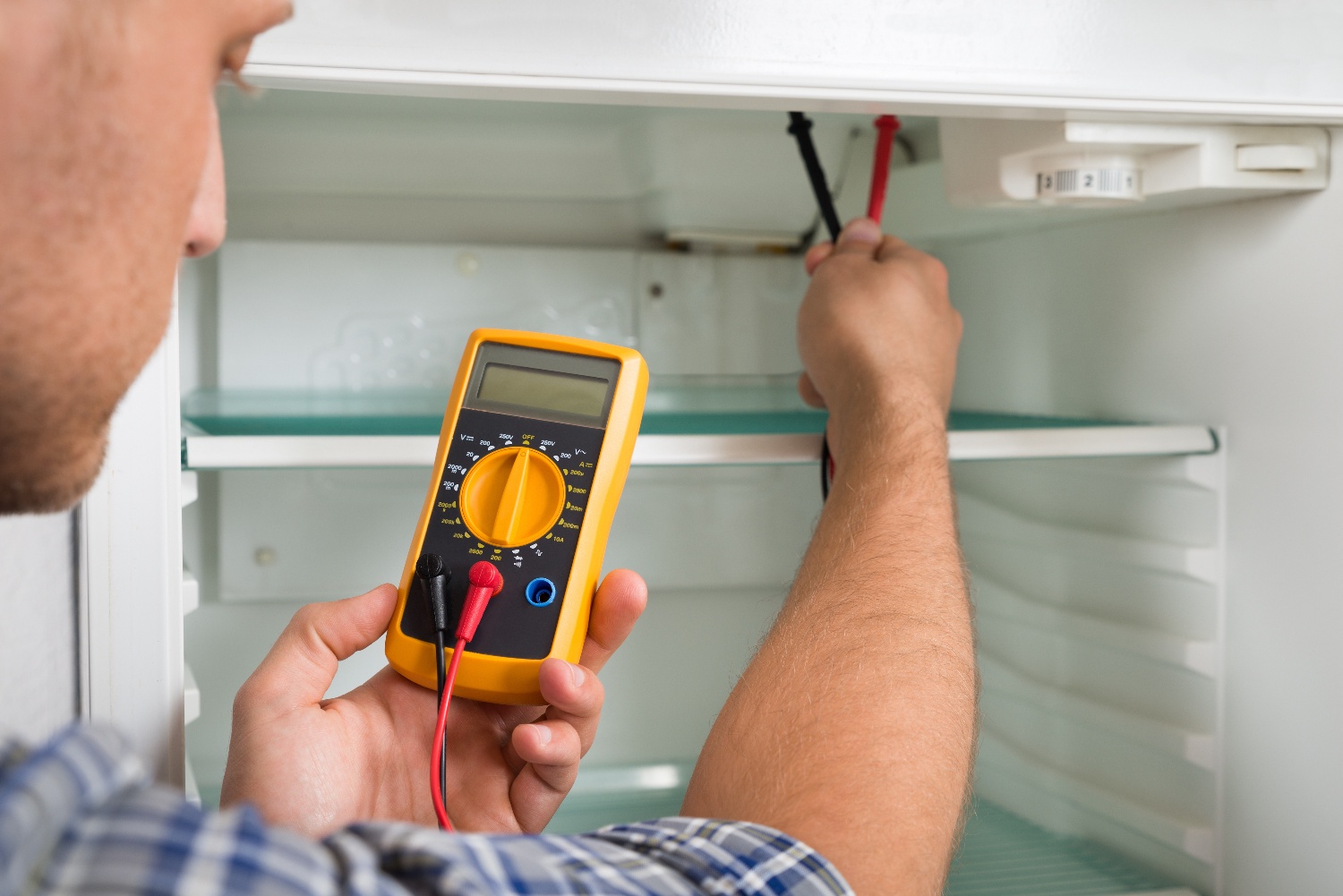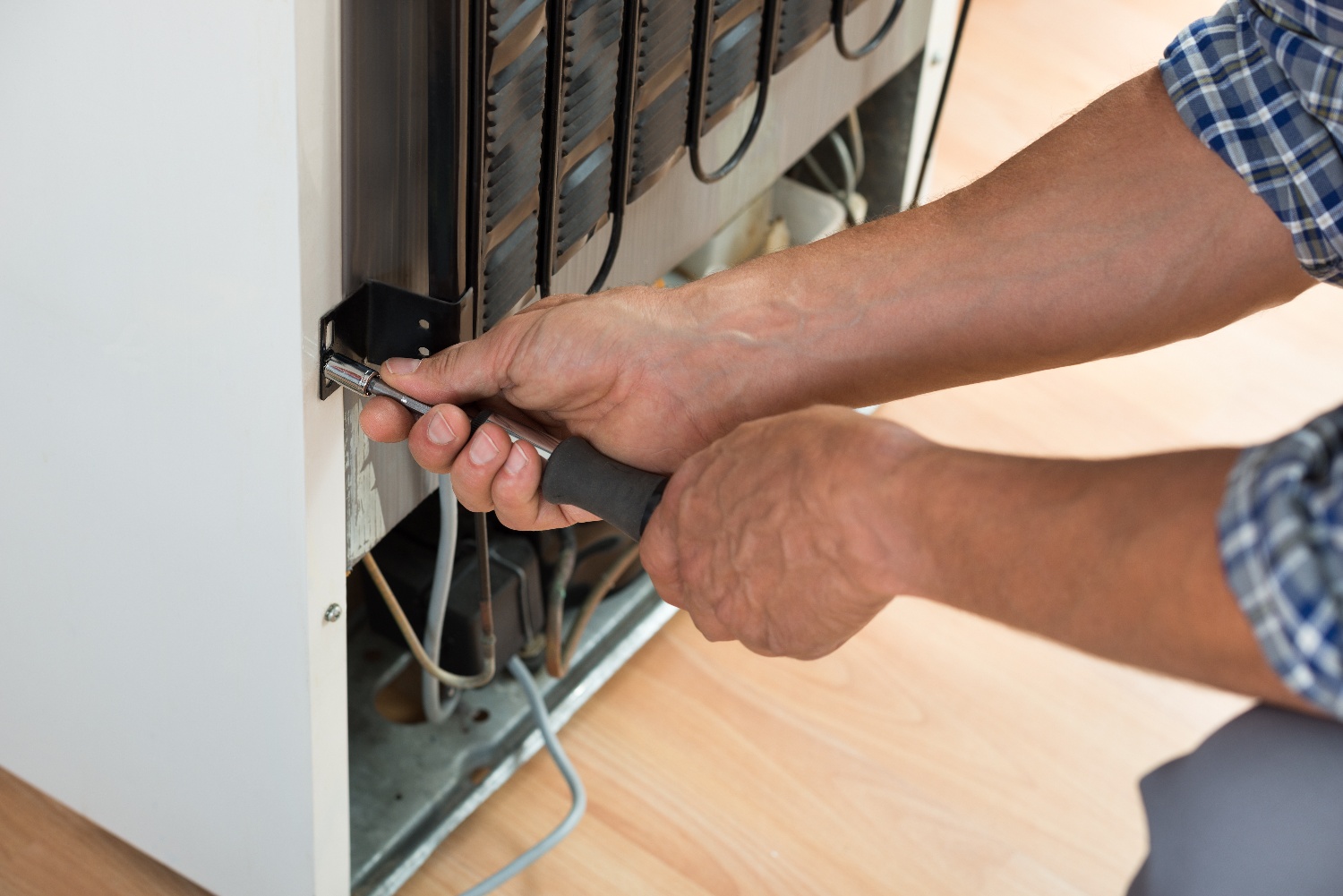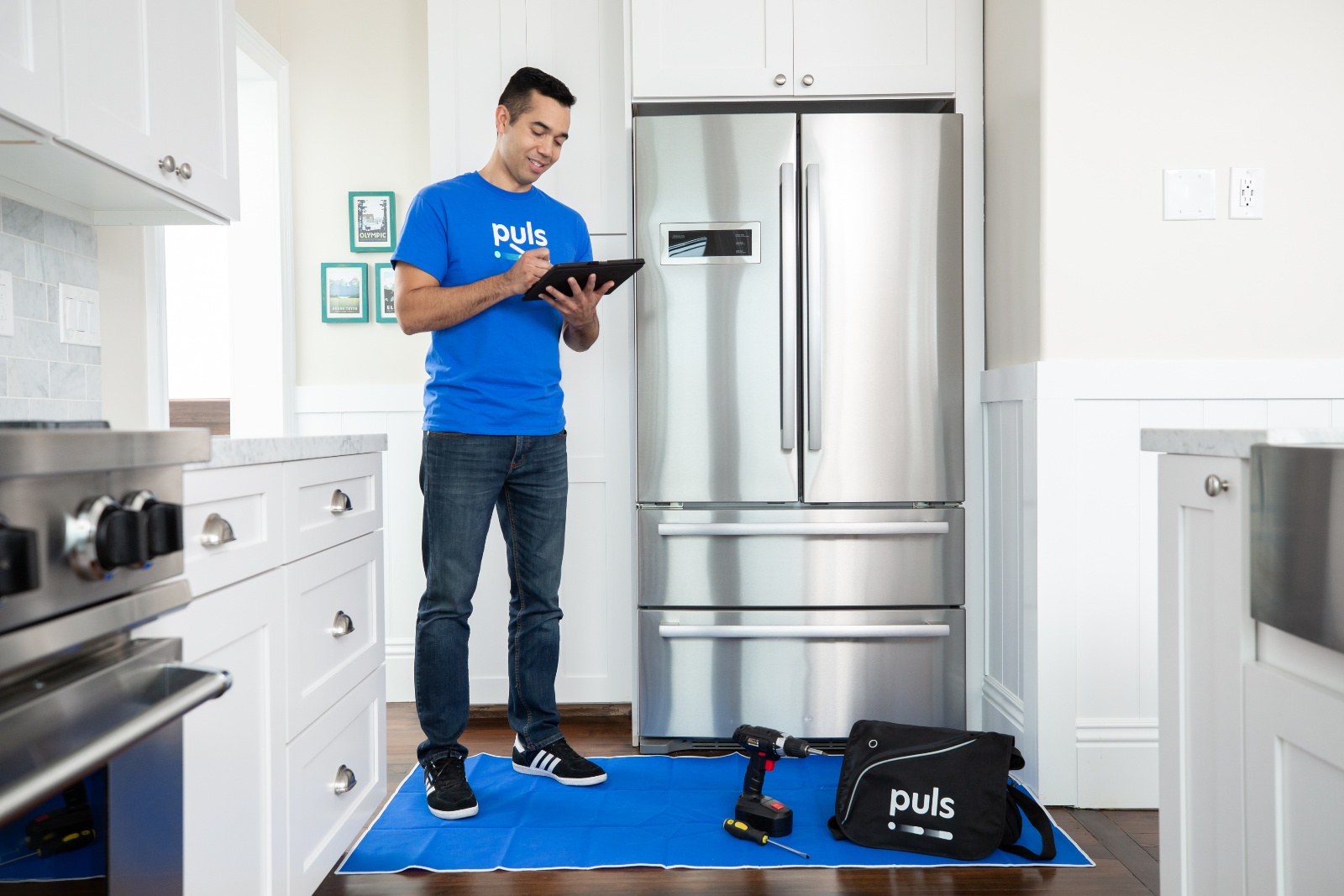Any ice cream aficionados out there probably know the old trick of taking your ice cream out of the freezer five minutes early to get that perfectly soft scoop – but if the spoon glides right in as soon as the carton hits the counter, you know you’re in trouble.
From room temperature steaks to lukewarm milk, the telltale signs of a refrigerator not cooling are bad news. Fortunately, there are a few things you can do on your own to help put your refrigerator problems on ice. Read on for some tips and tricks to try when you find that your refrigerator is not cooling properly.
Tools and Materials Required to Check Your Refrigerator
If you’re a little handy, you can tackle the refrigerator repair on your own with these few tools:
-
Socket/rachet set
-
Wire stripper/cutter
-
Level
-
Phillips head screwdriver
-
Evaporator fan and/or condenser fan
Possible Causes of Refrigerator Not Cooling
There can be a variety of things that prevent your refrigerator from cooling properly so don’t automatically assume it’s a total loss. Here are some of the most common issues:
Take a Look at the Thermostat

Another simple – perhaps seemingly obvious – step is to make sure that the thermostat wasn’t accidentally adjusted to raise the temperature. Lots of models use a knob to adjust the thermostat, and these are often located in out-of-the-way areas of the fridge interior. If that knob accidentally got bumped or jarred, it could raise your refrigerator’s temperature – and you wouldn’t notice it unless you went out of your way to check.
If the knob hasn’t been moved, you can check the thermostat operation. Unplug the fridge, remove the plastic thermostat cover, and unfasten the mode adjuster.
Turn the thermostat to the lowest option and connect the multimeter probes to the positive and negative terminals. It should have a reading of “0” or the thermostat is malfunctioning and will need to be replaced.
Check the Seal
A common cause to look at if your refrigerator is warm (or not cool enough) is to check around the door gasket to make sure it’s sealed properly. Whether your refrigerator door simply isn’t closed all the way or if the seal itself isn’t airtight, it’s a tall order trying to keep your fridge ice cold if all that cool air is escaping. That’s why if your fridge isn’t properly insulated, it could give the impression of a refrigerator not cooling all the way.
You might be surprised, but simply keeping that seal clean from all the crumbs and gunk that so easily get trapped in there can go a long way towards keeping your food cold now, as well as avoiding a gasket replacement further on down the line.
Determine if the Refrigerator is Leveled
It may seem like a simple issue and totally unrelated to the operation of your major appliance, but it’s important to keep your refrigerator perfectly level in order for the oil to circulate and keep all the major components well lubricated, running smoothly and avoid overheating.
This may be the easiest fix ever. Ensure your fridge is level, put a leveling tool on the top of the appliance. Check both front-to-back and side-to-side. If necessary, adjust leveling legs one at a time and recheck with your leveling tool (check your owner’s manual for the proper leveling method.)
Clear the Vents
Your refrigerator relies on air flow through a ventilation system between the freezer and refrigerator compartments to maintain a consistent temperature. If the vents get blocked, it impedes airflow and can cause temperatures inside your fridge to rise. This is actually quite common – both ice buildup and food items stored directly in front of the vents can contribute to blockage.
The good news is that it’s quite easy to take care of this issue. Just locate the vents in both your refrigerator and freezer and make sure there’s not a pileup right in front of them. Check for ice, as well, which can also stop air flow. If you see that the vents are icy, clearing them up is as easy as unplugging your refrigerator for a few hours and allowing the ice to melt.
Make Sure Your Fridge is Getting Power
You may be used to hearing the hum of your refrigerator running in the background, so you might not notice right away when your fridge stops working. If your appliance has stopped cooling, make sure it’s getting power.
Open the doors and check the lights and listen to see if the fan is running. If neither is operating, check the outlet to make sure it has power. Unplug the fridge and try plugging in a small fan or light. If there’s no power, check your electric breaker box to see if the circuit was blown.
If you discover the circuit was blown but the fridge doesn’t immediately turn back on, you can hit the reset button. Check the middle of the back panel and press the reset button to restart your machine.
Get Those Coils Clean

We seldom think about it, but the heat that’s removed from inside your fridge has to go somewhere, and that’s what the condenser coils are there for – to get rid of that excess heat so the interior of your fridge can stay nice and cool. The thing is, these coils naturally get dirty over time due to dust and other buildup.
With all that grime caked onto them, the coils can’t get rid of the heat as efficiently, leading to the temperature inside your fridge going up. If your refrigerator is warm, one of the first things you should do is check to see if your condenser coils are dirty. Cleaning them is a five-minute job and can save you an appointment with a repair person or a refrigerator repair company.
You can locate the condenser coils either underneath or behind your refrigerator, depending on the model. You may need to slide it away from the wall to access coils located on the back. While cleaning the coils themselves is pretty straightforward – you simply need a good vacuum attachment and/or a soft brush to safely clean the coils without damaging them.
It’s also extremely important that you unplug your refrigerator from the power source to make sure you avoid electric shock. After cleaning your condenser coils, simply snap the cover back into place or slide your fridge back against the wall and plug it back in.
Don’t Forget to Check the Refrigerator Evaporator Fan
If you’ve checked all the other options, but your freezer is no longer getting cold, your evaporator fan might be the culprit. If the evaporator fan is on its way out, you may hear a high-pitched sound or chirp. It may also mean that something is caught in the fan blades.
If you’re a DIY-er, you can check the evaporator fan that’s located behind the rear panel of the freezer.
- Unplug the refrigerator
- Remove the shelves from the freezer and any hardware holding them in place.
- Remove the air ducts on the back panel by unscrewing them with a Phillips head screwdriver or socket wrench.
- Remove the back panel.
- Disconnect the wiring from the fan motor.
- Clear any blockage away from the fan blades.
- Check the motor’s electrical resistance by plugging the probes from your multimeter into the wires coming out of the motor. Compare the reading to the resistance specifications noted in the owner’s manual.
- If it doesn’t match, you’ll need to replace the evaporator motor.
- While you have the freezer apart, plug a new motor into the wiring harness and screw it into place.
FAQ’s
What is the Average Life of a Refrigerator?
Statistics from the U.S. Department of Energy indicate the average life span of a refrigerator is around 12 years. With regular maintenance and care, a fridge can last up to 20 years before needing replacement. However, you may want to change it sooner if it’s not an energy-efficient model to save on your electric bill.
Should the Evaporator Fan Run Constantly?
The fan will not run when the door is open, and it will shut off during defrost mode that occurs every 8 hours. For the balance of the time, the fan will run most of the time to keep cooling effectively.
How Cold Should a Refrigerator Be?
The temperature inside your refrigerator will vary from opening and closing the door, the amount of food and distribution for good air circulation. The ideal internal temperature should range between 35 and 40 degrees Fahrenheit.
Do You Need to Leave Space Around a Fridge?
Yes, ventilation is needed around the refrigerator in order for it to breathe. To run efficiently, there should be at least one-inch of space at the back and top of the refrigerator.
Is Overstocking or Understocking a Fridge Cause Damage?
Yes, both overstocking and understocking can cause damage. Overstocking doesn’t allow sufficient air flow to occur leading to extra strain/overheating on the condenser coils and condenser. Understocking can also means that fewer cold items are there to regulate the cooler temperature and put extra strain on the refrigerator.
What Should You Check First if Your Fridge Stops Working?
The electricity to the fridge. Surprisingly, many people bypass this step and assume they have a major problem when their refrigerator stops working. Check the electric plug to be sure it’s still tight in the outlet (sometimes they come loose when cleaning behind it.) If it’s plugged in, check your circuit box. Is the breaker tripped to off? Sometimes the voltage needed to start the fridge’s motor can trip the circuit. If this happens often, make sure you have a dedicated 20 amp circuit for the refrigerator alone. Older homes may have it on a general circuit where all the kitchen appliances are on the same one. If that’s the case, every time the fridge is running and you try to microwave your hot pocket, the circuit will pop. Hire an electrician to run a dedicated line to your refrigerator.
Puls Offers an In-Home Fridge Inspection

If you’re familiar with Puls, you may already know how easy it is to schedule an appointment: simply hop online to book a time slot, and a certified Puls technician will be at your door in no time – often on the same day.
To make things easier, we also offer a thorough in-home inspection for just $79, which is waived entirely if you move forward with the repair. This will help you can get an idea of the issue at hand and how much it will cost before committing to anything
And, of course, we stand behind our technicians and the great work they do. That’s why on all refrigerator repairs we offer a 90-day guarantee on parts and labor - you can even click here to get 5% off your first service with us.





